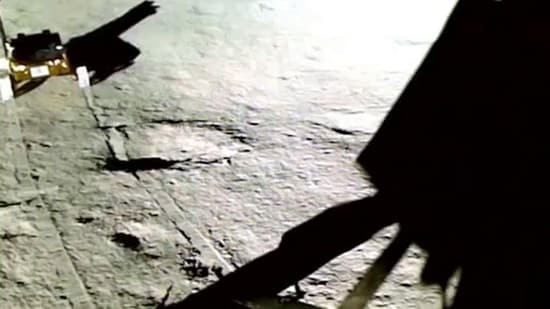Chandrayaan-3 landing site called ‘Shiv Shakti’: How are points on moon named?

Chandrayaan 3 is India's third Moon mission which landed near the lunar South Pole last Wednesday, a first for any country.
Prime Minister Narendra Modi on Saturday announced that Chandrayaan-3's landing point on the Moon will be called 'Shiv Shakti'. He also said the point where Chandrayaan-2 crash-landed on the lunar surface in 2019 will be named 'Tiranga'.
“This is India, which thinks innovatively and uniquely. This is India which goes to dark zones and illuminates the world by spreading light," Modi said during the announcement at ISRO Command Centre in Bengaluru.
The ‘Shiv Shakti’ point holds immense significance for humanity and space exploration as this is the first time any country has reached the far side of the Moon. The data gathered by Vikram Lander and the Pragyan rover will be key to understanding the atmospheric composition of the moon, its surface and other details about its environment.
But how are points on lunar surface named?
The International Astronomical Union (IAU), founded in 1919, is the nodal body to standardise the nomenclature of celestial objects, its website states. It has various task forces such as an executive committee, divisions, commissions, and working groups, which comprise professional astronomers from across the world.
On naming planet or satellite surfaces, it explains, “When the first images of the surface of a planet or satellite are obtained, new themes for naming features are chosen and names of a few important features are proposed, usually by the appropriate IAU Task Group in collaboration with the mission team.”
After following the protocols, the IAU's Working Group for Planetary System Nomenclature (WGPSN) ultimately approves proposed names in these cases.
Upon successful review by vote of the members of the WGPSN, the proposed names are considered approved as official IAU nomenclature, and then used on maps and in publications, it further says.
Earlier in 2020, a Moon crater spotted by Chandrayaan-2, was named after Vikram Sarabhai, the father of the Indian space programme. Chandrayaan-2 Orbiter captured the images of ‘Sarabhai Crater’ which has a depth of around 1.7 kilometres taken from its raised rim and the slope of crater walls is between 25 to 35 degrees.
Hindustan Times
(National)




